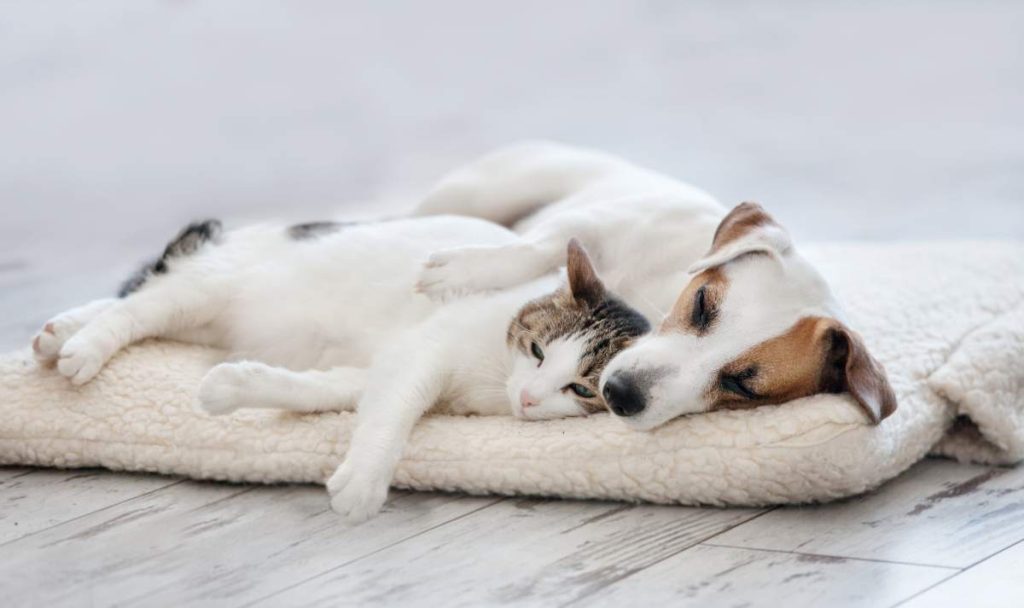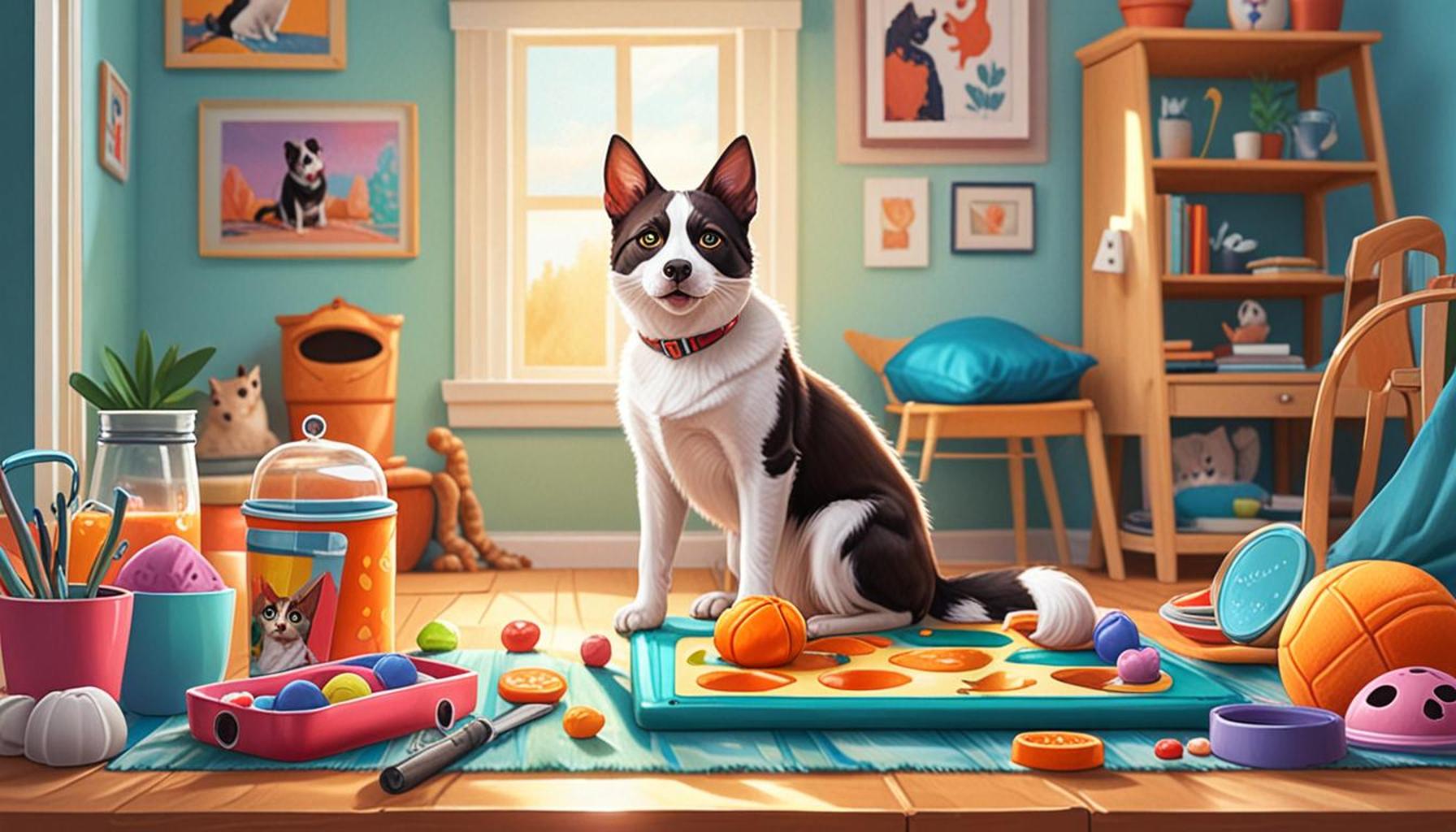How to Prepare Your Home for a New Pet: Essential Tips

Preparing Your Home for a New Pet
Bringing a new pet into your home can be one of life’s most joyful experiences. However, it’s essential to ensure your space is ready for this furry (or scaly) addition. Preparation not only helps your pet feel comfortable but also keeps your home safe and organized. A little effort before your new friend arrives can lead to a richer, more harmonious relationship in the months and years to come.
Before your new companion steps over the threshold, consider addressing the following crucial aspects:
- Safety Hazards: First and foremost, it’s vital to identify and remove any items that could pose a risk to your pet. This includes securing electrical cords, which curious pets might chew on, and removing any toxic plants. For instance, a common houseplant like lilies can be dangerous for cats, leading to severe health issues. Also, ensure that harmful substances like cleaning agents, medications, and small objects that could be swallowed are stored away safely.
- Designated Spaces: Creating specific areas for eating, sleeping, and playing is crucial in helping your pet adapt. For example, a quiet corner with a soft bed can become your pet’s sanctuary. Designating a feeding area with a non-slip mat might minimize mess and make cleanup easier. Additionally, consider setting up a play zone equipped with interactive toys and scratching posts or climbing structures. This not only helps your pet to feel secure but also provides stimulation necessary for their development.
- Supplies: Gathering necessary items is another essential step in your preparation journey. Ensure you have food and water bowls that are appropriate for your pet’s size; for instance, larger dog breeds require more substantial bowls. Don’t forget to stock up on high-quality food that meets the specific dietary needs of your pet. Toys should also vary in type; puzzle toys can keep pets mentally stimulated while simple chew toys help satisfy their natural instincts.
Creating a well-prepared home can lead to a smoother transition for both you and your new companion. An organized environment fosters familiarity and stability, contributing to your pet’s overall happiness. For example, a clean living space and ensuring pet-friendly furniture—like scratch-resistant sofas—can make a world of difference.
Understanding your pet’s needs lays the foundation for building trust and strengthening your bond. Each adjustment, from setting boundaries to gradually introducing your pet to different rooms, enhances their comfort. Consider utilizing training pads for puppies or litter boxes for kittens to facilitate easier housetraining.
In the following sections, we will delve deeper into essential tips that will help you create a welcoming atmosphere for your new pet. Whether you are adopting a puppy, kitten, or even a rabbit, these guidelines will be invaluable as you embark on this exciting journey. Getting to know the specific breed’s characteristics and requirements can further enrich your commitment, making your home a true haven for your new friend.

LEARN MORE: Click here for insights on tailored diets
Creating a Safe Environment
When it comes to welcoming a new pet, the first step is ensuring that your home is a safe environment for them to explore. Pets, especially puppies and kittens, often act out of curiosity, which can lead to accidents if hazards aren’t properly addressed. Secure any loose electrical cords by using cord covers or tying them up with zip ties. Additionally, be mindful of open windows and doors; consider installing screens to prevent pets from jumping out during an adventurous moment.
As you survey your space, take a close look at any household items that could be dangerous. Common household chemicals, such as bleach or disinfectants, should be stored in high cabinets or locked away entirely. It’s also essential to check for small objects, like coins or rubber bands, that can be easily swallowed. Don’t overlook the potential risks posed by common houseplants—some species, like ivy and philodendrons, are toxic to pets. Research the plants in your home or consult a local veterinarian to ensure your botanical choices are pet-friendly.
Designing a Pet-Friendly Space
Once you’ve eliminated safety hazards, it’s time to focus on creating a pet-friendly space. This includes mapping out the areas where your pet will spend the most time. For dogs, designate a spot for sleeping, preferably a quiet corner away from the hustle and bustle of your household. Invest in a comfortable, chew-resistant dog bed that can withstand enthusiastic activities while providing a sense of security. For cats, a cozy cat tree can offer climbing opportunities while also serving as a personal retreat.
- Feeding Zone: Set up a designated area for feeding that is away from foot traffic. Keep bowls on a non-slip mat to prevent spills. Ensure you have the right type of food and water bowls for your pet’s size—larger breeds require sturdier bowls to prevent tipping.
- Play Area: Ensure there’s a dedicated play area stocked with different toys. Monotonous toys can bore pets quickly, so choose a variety including chew toys, balls, and interactive puzzle games. Regularly rotate the toys to keep playtime exciting.
- Bathroom Space: For dogs, create a routine for outdoor bathroom breaks. For indoor pets like cats, provide a clean litter box in a quiet yet accessible location, and scoop it daily to maintain cleanliness. Familiarizing your pet with bathroom routines early on sets them up for success.
Having a well-defined pet-friendly area helps your new companion feel secure and comfortable in their new home. Routine and boundaries are crucial. Gradually introduce your pet to different rooms while supervising their exploration, and consider using baby gates to restrict access to certain areas temporarily until they adjust to their new environment.
Preparing your home thoroughly will not only make your pet feel welcomed but will also establish a foundation for a peaceful coexistence. By addressing safety, creating designated spaces, and providing the right supplies, you are laying the groundwork for a loving and nurturing environment that both you and your new companion will enjoy. As we move forward, we will explore additional tips, including essential supplies and behavioral expectations, that can greatly enhance your new pet’s transition into your family.
Creating a Safe Environment
When preparing your home for a new pet, the first step is to ensure that your living space is safe and comfortable. This means assessing your home for potential hazards. Remove toxic plants, secure heavy items on shelves, and keep harmful chemicals out of reach.In addition, it’s vital to establish designated areas within your home where your new pet can feel secure. Creating a specific spot for sleeping, eating, and playing can help your new furry friend adjust more easily to a new environment. This space should be away from high-traffic areas to provide a sense of calm.
Gathering Essential Supplies
Next, it is essential to gather all the necessary supplies before bringing your pet home. Basic items include food and water bowls, a sturdy leash, grooming tools, and a comfortable bed. If you’re adopting a dog, consider getting a crate for training purposes. For cats, a litter box is essential.Investing in quality products can significantly impact your pet’s well-being. Look for pet-safe cleaning supplies and chew-proof furniture to protect your home and your new companion.
Understanding Pet Needs
Each pet has unique needs that you should consider. Research the specific requirements for your pet, whether it is dietary preferences, exercise needs, or grooming habits. Consulting with a veterinarian before bringing your new friend home can provide you with vital insights into how to best care for them. This proactive approach ensures you’re fully prepared and can cater to your pet’s needs from day one.In summary, preparing your home for a new pet involves creating a safe environment, gathering essential supplies, and understanding the specific needs of your pet. Following these essential tips will help create a welcoming atmosphere, making the transition smoother for both you and your new companion.
DIVE DEEPER: Click here to learn more
Gathering Essential Supplies
As you prepare your home for a new pet, gathering essential supplies is a critical step to ensure their comfort and well-being. The right tools can make a significant difference in helping your furry friend settle into their new environment. Here’s a comprehensive checklist to help you get started:
- Food and Water Bowls: Choose bowls that are appropriate for the size of your pet. For dogs, stainless steel bowls are generally preferred as they are durable and easy to clean. For cats, shallow dishes may be more appealing, avoiding whisker fatigue. Always keep fresh water available to keep your pet hydrated.
- Quality Pet Food: Consult your veterinarian about the best diet for your new pet based on their age, size, and breed. When transitioning to a new food, it’s advisable to gradually mix it with their previous diet to avoid any digestive issues.
- Grooming Tools: Depending on the type of pet you have, grooming tools can range from brushes and combs for dogs and cats to nail clippers and de-shedding tools. Regular grooming not only helps in maintaining hygiene but also provides an opportunity for you to bond with your pet.
- Toys: Invest in a variety of toys, including chew toys, interactive toys, and balls. Pets, especially puppies and kittens, are prone to boredom, so having a selection can keep them engaged and prevent destructive behavior.
- Collar and Leash: Make sure to have an appropriate collar fitted with an ID tag that has your contact details. Leashes are essential for dogs, especially during leash training and walks.
- Pet Bed and Crate: A cozy bed can become your pet’s sanctuary. If you have a dog, consider crate training as it provides a safe space for them, particularly when you are busy or need to leave the house.
- Litter Box and Supplies: If you’re welcoming a cat, finding the right litter box is crucial. Make sure it’s large enough for your cat to comfortably turn around. Choose a cat litter that suits your cat’s preferences, whether clumping or non-clumping.
- Safe Outdoor Space: If you have a yard, ensure it is securely fenced and free from hazards. Be mindful of any plants or chemicals around the garden area that may be harmful to your new pet.
By gathering these supplies ahead of time, you will minimize the stress for both yourself and your new pet during their transition. Moreover, having the right resources promotes a healthy and happy lifestyle right from the start.
Establishing Routine and Training
Another critical aspect of preparing your home for a new pet is establishing a routine and initiating basic training. New pets thrive on routine, as it provides structure and predictability. From feeding schedules to potty breaks, having a consistent routine can significantly ease the adjustment period.
Start by setting specific times for feeding, which will help your pet learn when to expect meals. For dogs, establishing a bathroom schedule can facilitate quick learning habits. Regular outdoor excursions or designated bathroom breaks can ensure your dog develops a routine and understands when it’s time to relieve themselves.
Training is also essential for fostering good behavior. Basic commands such as “sit,” “stay,” and “come” are vital for their safety and your peace of mind. Consider using positive reinforcement methods, rewarding your pet with treats or praises for following commands. Enrolling in a local training class could be beneficial, especially for first-time pet owners who want to ensure they’re raising a well-behaved companion. It also provides an opportunity for socialization with other pets, which can be incredibly valuable for your pet’s development.
Introducing your new pet to the household gradually is also recommended. Allowing them to meet family members one at a time can help reduce anxiety and confusion. Additionally, keep them initially confined to a specific area of the home until they become comfortable, then gradually increase their access to the rest of the house.
All these preparation steps ensure that your home is not just a place to live, but a nurturing and enriching environment for your new furry family member, setting the stage for a joyful companionship. With safety, routines, training, and the right supplies in place, both you and your pet can start building a lifetime of memories together.
DIVE DEEPER: Click here to discover how the environment affects your pet’s behavior
Conclusion
Bringing a new pet into your home is an exciting and transformative experience. As you embark on this journey, it’s crucial to focus on creating a welcoming environment that prioritizes your pet’s safety, comfort, and well-being. By preparing your home through gathering essential supplies, establishing a structured routine, and implementing basic training, you pave the way for a harmonious and fulfilling relationship with your new companion.
Remember that the transition period can vary between pets, and patience is key. Every pet has its own personality, and adapting to a new home can take time. Providing a safe space, coupled with engaging activities and regular socialization, will help your pet settle in comfortably. Don’t hesitate to consult resources, such as local veterinarians or pet training facilities, to further enhance your understanding of your new pet’s needs.
Incorporating love and attention into your daily interactions will strengthen the bond between you and your pet, making your house not just a dwelling, but a true home filled with joy and companionship. As you embark on this rewarding adventure, know that each step you take today is fundamental in shaping a loving forever home for your new furry friend. Prepare wisely, and you will undoubtedly reap the immeasurable rewards of unconditional love and loyalty that comes with pet ownership.



